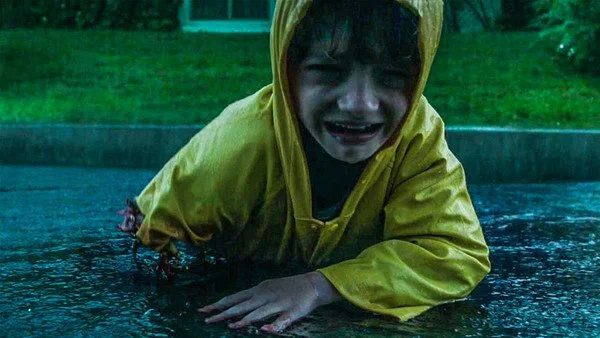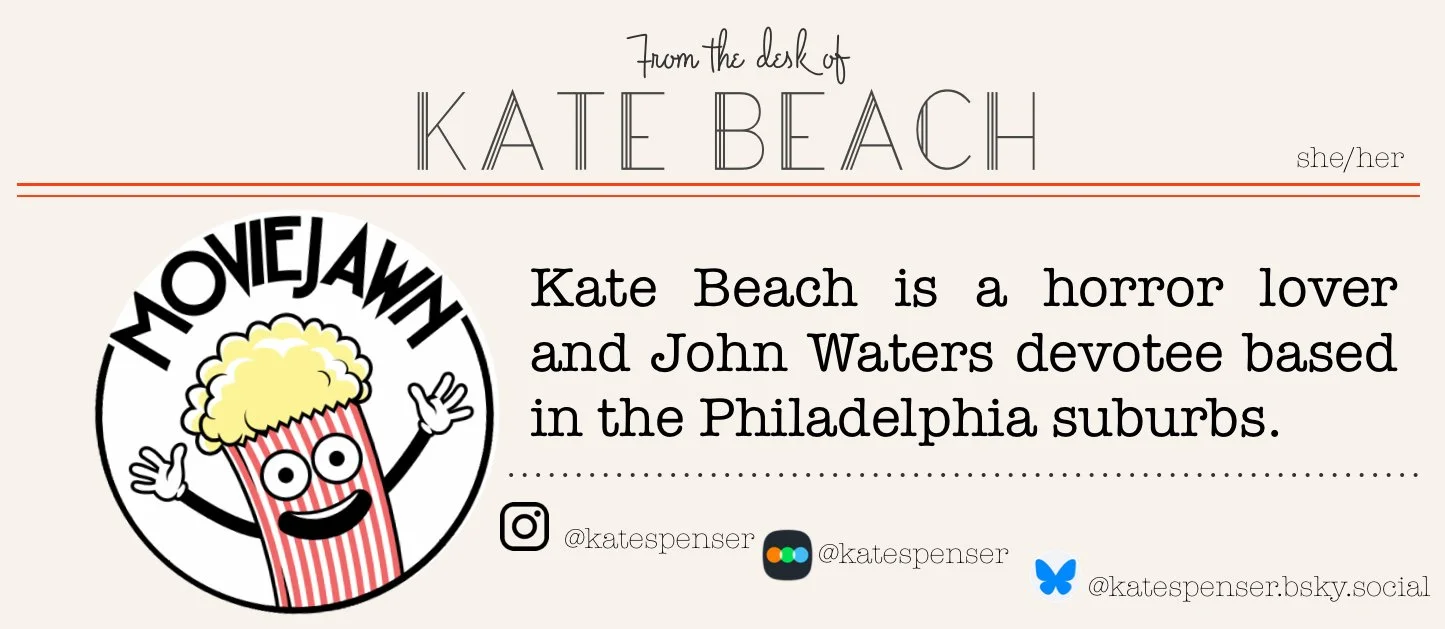How To Start Watching: Stephen King Adaptations
Welcome back to How to Start Watching, in which our staff will recommend movies that will help you start watching a particular genre, director, film movement, etc. It’s a list of movies, but with a purpose that isn’t recounting the best or even favorites. Each entry will suggest a few films that will help you find a way into more movies! A starter pack, if you will.
by Kate Beach, Staff Writer
Trying to figure out where to start anything regarding Stephen King can be daunting. King is not only extremely prolific on his own, but his work has been adapted dozens of times, both in film and television. If you’re a total King novice, where do you begin? With the earliest works? With the most famous? The ones with the highest scores on Rotten Tomatoes? King’s own favorites? What I’ve tried to do here is assemble a collection of films and series that provide a foundation for the King experience, broken down into three sections: Early Classics, the Middle Years, and the New Era. If you’re really feeling motivated, I’ve included a few extras in each category, plus some television adaptations at the end.
Dig in, press play, and get scared. And no, we won’t be covering The Shining.
EARLY CLASSICS
Carrie (dir. Brian DePalma, 1976)
King’s first novel, Carrie, was released in 1974. After tepid initial sales and then a surge in paperback, it was adapted by Brian DePalma in 1976, starting the clock on King adaptations and setting the bar impossibly high.
Tackling the horrors of high school in a particularly visceral way, Carrie features such strong performances from Sissy Spacek and Piper Laurie that they were both nominated for Oscars, despite the Academy’s general reluctance to celebrate horror. At risk of going into a Stefon impression, this movie has everything: telekinesis, religious fanaticism, and tampons. It also features a who’s-who of great 70s actors, both during and before the highest heights of their fame. Come for Sissy and Piper going wild, stay for John Travolta, PJ Soles, Amy Irving, and Betty Buckley.
Creepshow (dir. George A. Romero, 1982)
Who doesn’t love an anthology? This collaboration by King and legendary filmmaker George A. Romero is a match made in horror heaven. Creepshow features five short films written by King, in his screenwriting debut, and performed by a number of greats like Hal Holbrook, Leslie Nielsen, and Adrienne Barbeau. It’s a pulpy, silly collection that’s spawned two sequels and a handful of TV adaptations.
Christine (dir. John Carpenter, 1983)
Early adaptations might make you wonder what was going on at King’s high school. Or maybe he just had a lot to say about the fetishization of the 50s and 60s. Christine is another relatively early King adaptation that features teenagers, and some of his most iconic other works are about childhood and adolescence. The premise, essentially “What if a car was evil?” is a little silly, but it’s just as much about letting shithead bullies turn you cold, cruel, and selfish.
Directed by the great John Carpenter, Christine is quintessential King in terms of themes and imagery. While the novel does a better job of digging into the American obsession with both cars and 50s nostalgia, the movie still effectively weaponizes a classic car and a soundtrack full of doo wop songs. King has said he’s not a fan of this adaptation, but it’s still an important part of his film canon.
Stand By Me (dir. Rob Reiner, 1986)
At the tail end of the first decade of Stephen King adaptations came Stand By Me, a departure from the horror audiences had come to expect from King. Instead, it’s a coming-of-age drama that still features many of the themes that interest King; youthful friendships, midcentury nostalgia, and sure, dead bodies. Stand By Me is widely regarded as one of the best movies of the 1980s, it is King’s personal favorite adaptation of his work, and it’s just a great, surprisingly timeless film.
Further Frights: If you’re looking for more King in the 70s and 80s, try The Dead Zone (David Cronenberg, 1983) and Children of the Corn (Fritz Kiersch, 1984).
THE MIDDLE YEARS
Pet Sematary (dir. Mary Lambert, 1989)
Besides being a stone cold horror classic, Pet Sematary is the only major King film adaptation directed by a woman (Kimberly Peirce directed a remake of Carrie in 2013, but you won’t find that on this list.) In 1989, Mary Lambert took the reins of this story about a family learning the hard way that, well, sometimes dead is better. She even enlisted The Ramones to write a tie-in song that makes it onto my Halloween playlist every single year.
Misery (dir. Rob Reiner, 1990)
Did I take this assignment just so I could talk about one of my favorite movies of all time, Misery? Maybe! If you watch only one King adaptation from this list, please let it be this one. Repeat King interpreter Rob Reiner’s 1990 film has the distinction of being the only Stephen King adaptation to win an Oscar; Kathy Bates won Best Actress for her performance as Annie Wilkes. It’s a tense psychological thriller that’s sometimes hilarious and often terrifying. Plus, there’s a giant pig. King ranks it as one of his favorites, and we agree on that one.
Needful Things (dir. Fraser C. Heston, 1991)
Alright, this isn’t a great movie. It’s not even a really good one. But I have a fondness for it, and I’d be remiss if I didn’t include at least one of King’s Castle Rock stories here. Castle Rock is the fictional Maine town that features in a number of King stories and films. It’s also the title and setting for the series Castle Rock, but more about that later. Needful Things is a classic “mysterious man comes to town” story with some wonderful King touches. The movie is a bit of a mess but the cast is stacked; tune in for Max Von Sydow, Bonnie Bedelia, and Ed Harris as recurring King character Alan Pangborn.
The Shawshank Redemption (dir. Frank Darabont, 1994)
Another King adaptation that’s become a beloved classic. Rita Hayworth and Shawshank Redemption first appeared in Different Seasons, a collection of King’s novellas that includes The Body (Stand By Me) and Apt Pupil, adapted by Bryan Singer in 1998. All were dramas as opposed to straightforward horror, and The Shawshank Redemption remains the most well-regarded King adaptation of them all, with seven Academy Award nominations. Featuring outstanding performances by Morgan Freeman and Tim Robbins, it’s the kind of Stephen King you can watch with your parents.
Further Frights: 90s King is your needful thing? Check out Dolores Claiborne (Taylor Hackford, 1995) and The Dark Half (George A. Romero, 1993).
THE NEW ERA
IT: Chapter 1 (dir. Andy Muschietti, 2017)
Andy Muschietti’s two part journey to Derry, Maine kind of falls apart in the second film. But this first installment is a blast. Professional freaky guy Bill Skarsgård (who also appeared in King series Castle Rock) horrifies and delights as Pennywise the dancing clown, terrorizing a plucky gang of adolescents in classing King fashion. Go ahead and see the second chapter, but know that it doesn’t get any better than this.
Doctor Sleep (dir. Mike Flanagan, 2019)
We’re not going to talk about The Shining here, but we are going to talk about Doctor Sleep. King’s sequel to The Shining, this new work follows grown-up Dan Torrance as he reckons with his childhood trauma and battles new evil forces. Following his take on Gerald’s Game in 2017, Doctor Sleep established Mike Flanagan as the preeminent King interpreter of the 21st century. It’s a luxurious 152 minutes, with a director’s cut that adds another 28 minutes, and totally worth the time. With another adaptation, The Life of Chuck coming this year, Flanagan shows no signs of giving up his title as the current King of King.
Further Frights: Try the series Castle Rock for not just new-era King, but dozens of pieces of the King canon all mixing and mingling. While you’re getting into TV adaptations, check out The Stand, directed by Mick Garris in 1994, and one absolutely wacky episode of Nightmares and Dreamscapes, a short-lived King anthology series that aired on TNT in 2006. Find the episode called “You Know They Got a Hell of a Band” and thank me later.
Support MovieJawn Staff
〰️
Support MovieJawn Staff 〰️
With the death of so much print media and meaningful journalism, it is important now more than ever to support the writers and outlets you love.
If you enjoyed this article, show your support by donating to our writer. All proceeds go directly to the writer. Recommended donation is $5.















